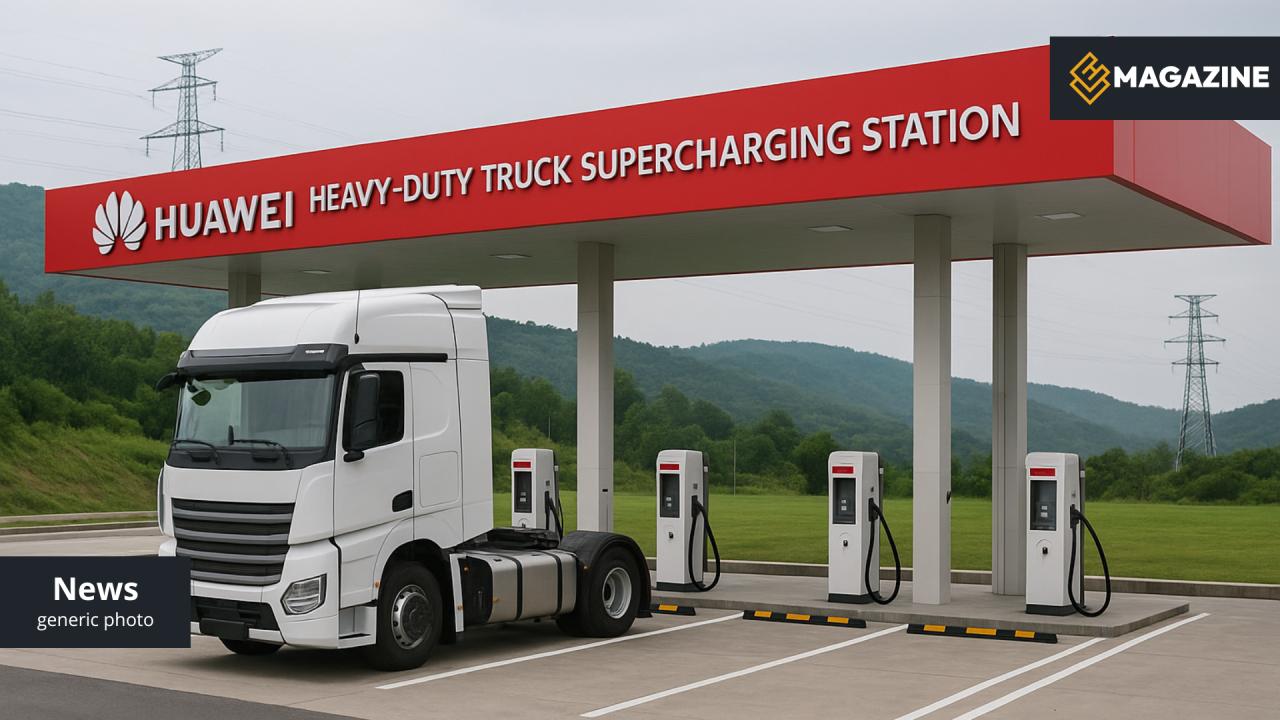100MW
700
5 min
45,000t
Revolutionary Megawatt Technology Transforms Commercial Transport
The Sichuan Yuanqi Xingguang Heavy-Duty Truck Megawatt Supercharging Station represents a paradigm shift in commercial electric vehicle infrastructure. Located in Beichuan Qiang Autonomous County, this 150 million yuan (€19.5 million) facility showcases how megawatt-class charging can finally make electric heavy-duty trucks viable for intensive commercial operations.
Huawei's fully liquid-cooled megawatt charging system employs immersive cooling technology that maintains stable 2,400-ampere output for 15 continuous minutes. This engineering feat enables the system to transfer 24kWh per minute—nearly four times faster than conventional fast-charging solutions—while operating reliably in extreme temperatures from -30°C to 60°C.
Beyond Traditional Charging: The Smart Grid Integration
What sets this station apart isn't just raw power—it's the sophisticated "source-grid-load-storage" microgrid architecture. The facility integrates a 1MW photovoltaic carport with advanced wind-liquid intelligent cooling energy storage systems, creating a self-sustaining energy ecosystem that generates 5,000 kWh of green electricity daily.
The station leverages Virtual Power Plant (VPP) technology to interact dynamically with the grid, maximizing renewable energy consumption while providing grid stabilization services. This bidirectional capability transforms the charging station from a grid burden into a grid asset, achieving what Huawei calls "vehicle, pile, and grid" synergy.
Real-World Impact: Economics That Drive Adoption
Truck operators save €0.20 per kilometer compared to diesel, totaling €19,600 annually—effectively recovering the vehicle cost within three years of operation.
Station operators experience 15% improved operational efficiency through optimized charging cycles and intelligent load management systems.
The complete electrification enabled by this station eliminates 45,000 tons of CO₂ annually—equivalent to planting 2 million trees.
Supporting "3.5C" supercharging protocols, the station accommodates 99% of existing commercial EV models while future-proofing for next-generation vehicles.
Strategic Partnerships Accelerate Market Transformation
Huawei's megawatt charging ecosystem extends far beyond this single station. The company has forged strategic partnerships with logistics giants SF Express and JD.com to deploy over 5,000 electric heavy trucks adapted to megawatt supercharging between 2025 and 2027. Additionally, collaboration with 11 automakers has resulted in more than 30 compatible truck models specifically designed for 4C ultra-fast charging.
For heavy-duty trucks to be fully electrified, the charging time must be under 30 minutes. Our megawatt technology doesn't just meet this requirement—it shatters it, enabling a 15-minute charge for 80% capacity on a 400kWh battery.
Proven Success: From Pilot to Production
The technology has already proven its worth at Shenzhen's Yantian Port, where electric heavy-duty trucks operate on a "charge 15 minutes, operate 4 hours" cycle. This pilot project achieved a remarkable 35% reduction in operating costs compared to diesel trucks, demonstrating the immediate economic viability of electrified commercial transport.
European Market Implications
As European nations accelerate their commercial transport electrification goals for 2030 and beyond, Huawei's breakthrough demonstrates that the technology for rapid, large-scale truck charging already exists. The Megawatt Charging System (MCS) standard, actively developed by the CHARIN alliance including European automakers, targets similar capabilities with 3,000-ampere charging at 1,250V.
The Road Ahead: Scaling the Revolution
The Sichuan station serves as a blueprint for future deployments worldwide. Its combination of ultra-high-power charging, renewable energy integration, and grid-friendly operation addresses the three critical barriers to commercial EV adoption: charging speed, infrastructure cost, and grid impact.

